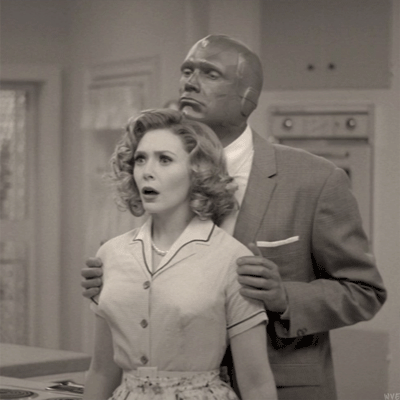How Big Is Our Galaxy, The Milky Way?
How Big is Our Galaxy, the Milky Way?
When we talk about the enormity of the cosmos, it’s easy to toss out big numbers – but far harder to wrap our minds around just how large, how far and how numerous celestial bodies like exoplanets – planets beyond our solar system – really are.
So. How big is our Milky Way Galaxy?
We use light-time to measure the vast distances of space.
It’s the distance that light travels in a specific period of time. Also: LIGHT IS FAST, nothing travels faster than light.

How far can light travel in one second? 186,000 miles. It might look even faster in metric: 300,000 kilometers in one second. See? FAST.

How far can light travel in one minute? 11,160,000 miles. We’re moving now! Light could go around the Earth a bit more than 448 times in one minute.

Speaking of Earth, how long does it take light from the Sun to reach our planet? 8.3 minutes. (It takes 43.2 minutes for sunlight to reach Jupiter, about 484 million miles away.) Light is fast, but the distances are VAST.

In an hour, light can travel 671 million miles. We’re still light-years from the nearest exoplanet, by the way. Proxima Centauri b is 4.2 light-years away. So… how far is a light-year? 5.8 TRILLION MILES.

A trip at light speed to the very edge of our solar system – the farthest reaches of the Oort Cloud, a collection of dormant comets way, WAY out there – would take about 1.87 years.
Our galaxy contains 100 to 400 billion stars and is about 100,000 light-years across!
One of the most distant exoplanets known to us in the Milky Way is Kepler-443b. Traveling at light speed, it would take 3,000 years to get there. Or 28 billion years, going 60 mph. So, you know, far.
SPACE IS BIG.

Read more here: go.nasa.gov/2FTyhgH
Make sure to follow us on Tumblr for your regular dose of space: http://nasa.tumblr.com.
More Posts from Dynamic-light-scattering and Others








Brie Larson singing on Instagram


H E I G H T D I F F E R E N C E



literally us gays growing up and trying to relate to something
I'm so amazed










Black Holes Are Real And Spectacular, And So Are Their Event Horizons
“Originally estimated to be slightly larger than its M87 counterpart, the black hole at the center of the Milky Way — known as Sagittarius A* — has not yet had its event horizon imaged. When you observe the Universe, you don’t always get what you expect; sometimes, you get what it gives you. Instead, it was M87’s black hole that came through first, which was a much brighter and a much cleaner signal.
What we’ve found is spectacular. Those dark pixels at the center of the image are actually the silhouette of the event horizon itself. The light that we observe comes from the accelerated, heated matter around it, which must emit electromagnetic radiation. Where the matter exists, it emits radio waves, and the dark circle we see is where the background radio waves are blocked by the event horizon itself.”
We have an event horizon, folks! It wasn’t the one at the center of our galaxy that came through first, but rather the one at the center of Messier 87: a black hole over 1,000 times more massive, but some 2,000 times farther away, than the one contained in the Milky Way. This is an ultramassive black hole that’s almost the size of the entire Solar System, and its event horizon is real.
Come get the full story on what we know, now that we have our image, about black holes in the aftermath of the Event Horizon Telescope!
Now we just need Jaimie Alexander returning as Lady Sif



Natalie Portman returns in the Marvel Cinematic Universe as Jane Foster / female Thor
History has been made today

The first image of a black hole, from the galaxy Messier 87
April 10, 2019








“From the script’s first draft, Larson says she noted the significance of women being involved, in all stages of the film’s creative process.”
M87 on different scales and wavelengths

VLA radio image of the galaxy M87 in 1999. We are looking at complex flows of matter 200,000 light years across (that’s twice the size of our galaxy, the Milky Way). Let’s get closer.

X-ray image by Chandra, 2019 - we are looking at very energetic emission here! The close-up is about 25,000 light years across. Let’s look more closely…

Composite (UV, optical, infrared) image from the Hubble Space Telescope (2000). You can see the plasma jet the central Supermassive Black Hole ejects. The width of the image is 5000 light years.
Are you ready to see what’s causing all this mess?

This image is a fraction of a light year across (edited by Randall Munroe of XKCD). The supermassive black hole weighs 6.5 billion times our Sun!



Let them all come, Clint. Let every last one of those tracksuit-wearing sub-verbal bullying murderous scumbags come at us. Because you and me? Together? Together, Clint, I think you and me are the person we both wish we could be.
-
 looookingup reblogged this · 11 months ago
looookingup reblogged this · 11 months ago -
 onlythoughtdaughter reblogged this · 1 year ago
onlythoughtdaughter reblogged this · 1 year ago -
 arts-dance reblogged this · 2 years ago
arts-dance reblogged this · 2 years ago -
 artinwood54 liked this · 2 years ago
artinwood54 liked this · 2 years ago -
 acommonloon liked this · 2 years ago
acommonloon liked this · 2 years ago -
 thethirdman8 reblogged this · 2 years ago
thethirdman8 reblogged this · 2 years ago -
 cernunnos1990 liked this · 2 years ago
cernunnos1990 liked this · 2 years ago -
 aspergers1044 liked this · 2 years ago
aspergers1044 liked this · 2 years ago -
 salvadorianstingray reblogged this · 3 years ago
salvadorianstingray reblogged this · 3 years ago -
 thelovelymazza6 liked this · 3 years ago
thelovelymazza6 liked this · 3 years ago -
 nothingnessreality reblogged this · 3 years ago
nothingnessreality reblogged this · 3 years ago -
 formulawhatt liked this · 3 years ago
formulawhatt liked this · 3 years ago -
 thethirdman8 reblogged this · 3 years ago
thethirdman8 reblogged this · 3 years ago -
 1948521326 reblogged this · 3 years ago
1948521326 reblogged this · 3 years ago -
 bikeface71 liked this · 3 years ago
bikeface71 liked this · 3 years ago -
 eno-gib17-blog liked this · 3 years ago
eno-gib17-blog liked this · 3 years ago -
 lady-drose-sd liked this · 4 years ago
lady-drose-sd liked this · 4 years ago -
 rodolfo9999 liked this · 4 years ago
rodolfo9999 liked this · 4 years ago -
 fading--to--grae reblogged this · 4 years ago
fading--to--grae reblogged this · 4 years ago -
 fading--to--grae liked this · 4 years ago
fading--to--grae liked this · 4 years ago

